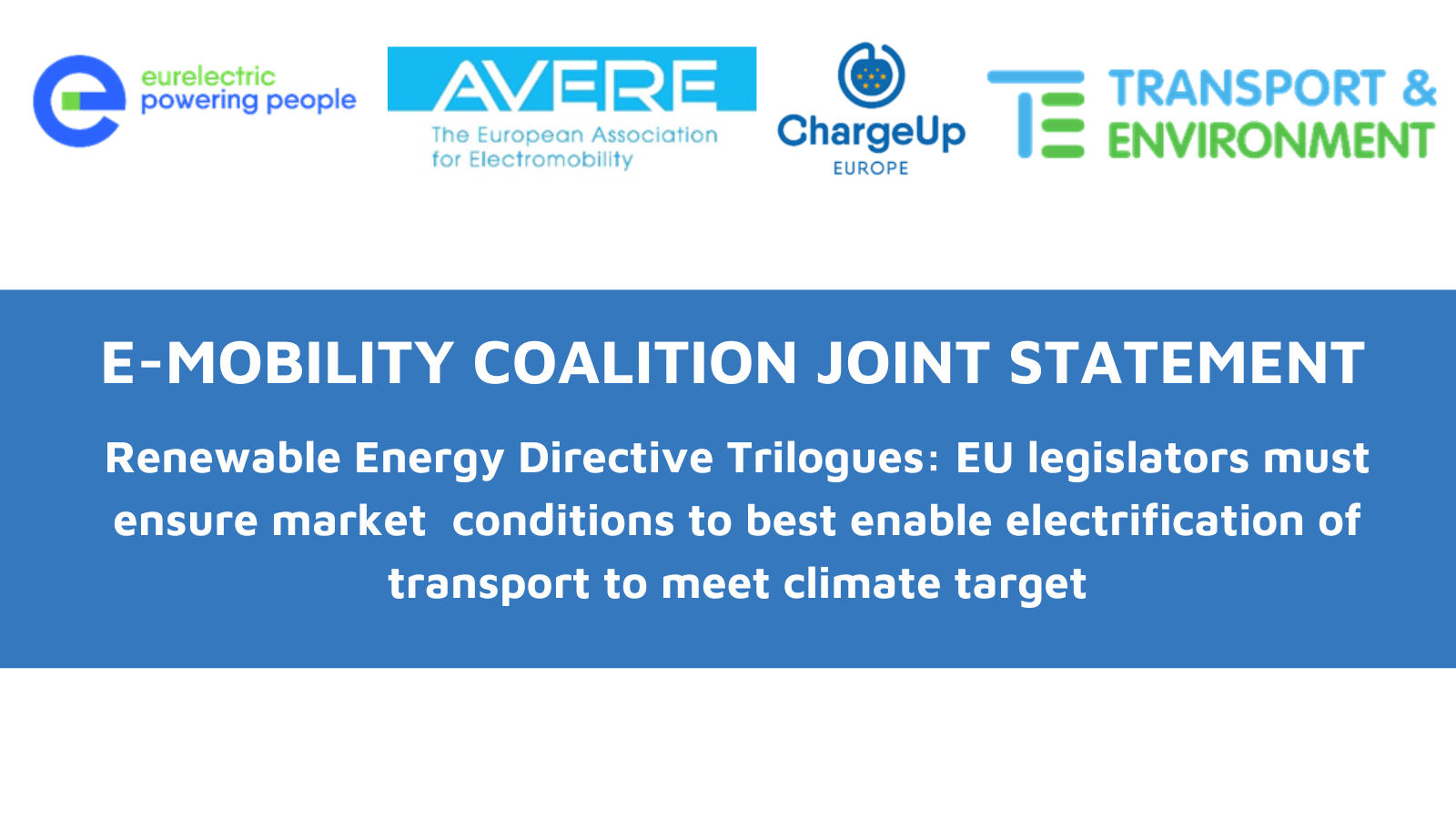
With electric vehicle sales in Europe surpassing 10% in 2021 and with the industry committed to move towards phasing out internal combustion engines in new passenger vehicles by 2035, road transport is undeniably experiencing a major transformation. Together, passenger cars and light commercial vehicles are responsible for 15% of all Europe’s carbon d ioxide emissions. Moreover, switching to electric vehicles would tackle toxic nitrogen dioxide (NO2) pollution, predominantly caused by ICE cars and vans. NO2 pollution contributes to the deaths of over 40,000 Europeans every year.
The revision of Renewable Energy Directive (RED) presents an unmissable opportunity to accelerate the transition of the transport sector towards zero emissions, with direct electrification being the most efficient and cleanest way to achieve it. We need to go beyond just blending biofuels, and battery electric vehicles offer the highest conversion efficiency when compared to other solutions.
Therefore, the undersigned coalition, representing the entire range of the electric mobility ecosystem, call on the interinstitutional negotiators to adequately value electricity for its role in emissions reduction and to ensure a market framework reflecting that fact.
With this in mind, ahead of the RED trilogue meeting on transport provisions on 21 March, co-legislators must factor in the following three elements:
1 . The transport renewables sub–target must properly account for the superior energy conversion efficiency of renewable electricity versus fuels
Co-legislators must ensure that both energy and Greenhouse Gas (GHG) based calculation systems recognise this efficiency through an appropriate Energy Efficiency Ratio (‘multiplier’). This would involve maintaining the fossil fuel comparator proposed by the Commission and endorsed by the Council, i.e., ECF(e), for calculating the GHG intensity reduction of renewable electricity, which accounts for the superior energy conversion efficiency of renewable electricity compared to fuels. Any changes to this approach would severely undermine the competition of renewable electricity vis-à-vis other forms of renewable energy.
The Parliament requests to change the fossil fuel comparator reference value to EF(t)) after 2030 for all “renewable fuels” (i.e., 94 gCO2eq for both biofuels and renewable electricity). However, this would not promote energy efficiency and is dangerous for the EU’s climate objectives.
Proponents of this change claim that renewable electricity is granted disproportionately high GHG savings. However, in calculating the GHG benefits of electricity supplied into the transport sector under GHG-based systems, it is important to maintain the fossil electricity reference value of 183gCO2 eq/MJ as originally proposed by the Commission. This ECF(e) fossil fuel comparator provides a stronger incentive to use renewable electricity to reduce the GHG intensity of transport fuels.
2. Member States should have flexibility for choosing energy-based national accounting systems not to delay the RED III incentives for the transport sector to consume renewable electricity
The Commission and the Parliament propose to calculate decarbonization efforts in the transport sector based only on GHG reductions, although a majority (24 out of 27) of Member states currently use an energy-based system. This shift would add unnecessary administrative burden, which could slow down an effective implementation at national level.
Importantly, in case countries implement an energy-based accounting system, an explicit Energy Efficiency Ratio (EER) of 4 for renewable electricity should be reinserted, as was applicable under the current RED. This is necessary to account for differences between primary and final energy.
3. Extend the scope of fuel-neutral credit trading to include private charging to properly incentivize and reward all market players
The Commission’s proposed EU-wide requirement for Member states to set up a fuel neutral credit mechanism is highly welcome. This modernisation guarantees equal treatment between energy options: national fuel suppliers will have a broader range of options at their disposal to choose from in meeting their obligations; not just renewable fuels, but also renewable electricity. However, the mandated credit system currently limits the scope to public recharging stations only.
Currently, an estimated 70% of the energy charged for passenger cars is done at home and 99% of public transport and logistics vehicles charge at private chargers. Some Member State have recently established a straightforward way to include private/residential charging in its RED II implementation.
By enabling market players to claim credits for charging of electric vehicles also on private chargers, co-legislators would create the market place which both incentivizes private actors to go electric and have EV charging on their premises, which rewards them for doing so, improving the economics of electrification, and which also can provide many more EV carbon credits to the market to help Member States meet the targets.
In line with the European Parliament’s mandate, the EU should seek to spread this best practice, rather than artificially limit the credit system to public charging stations only.

